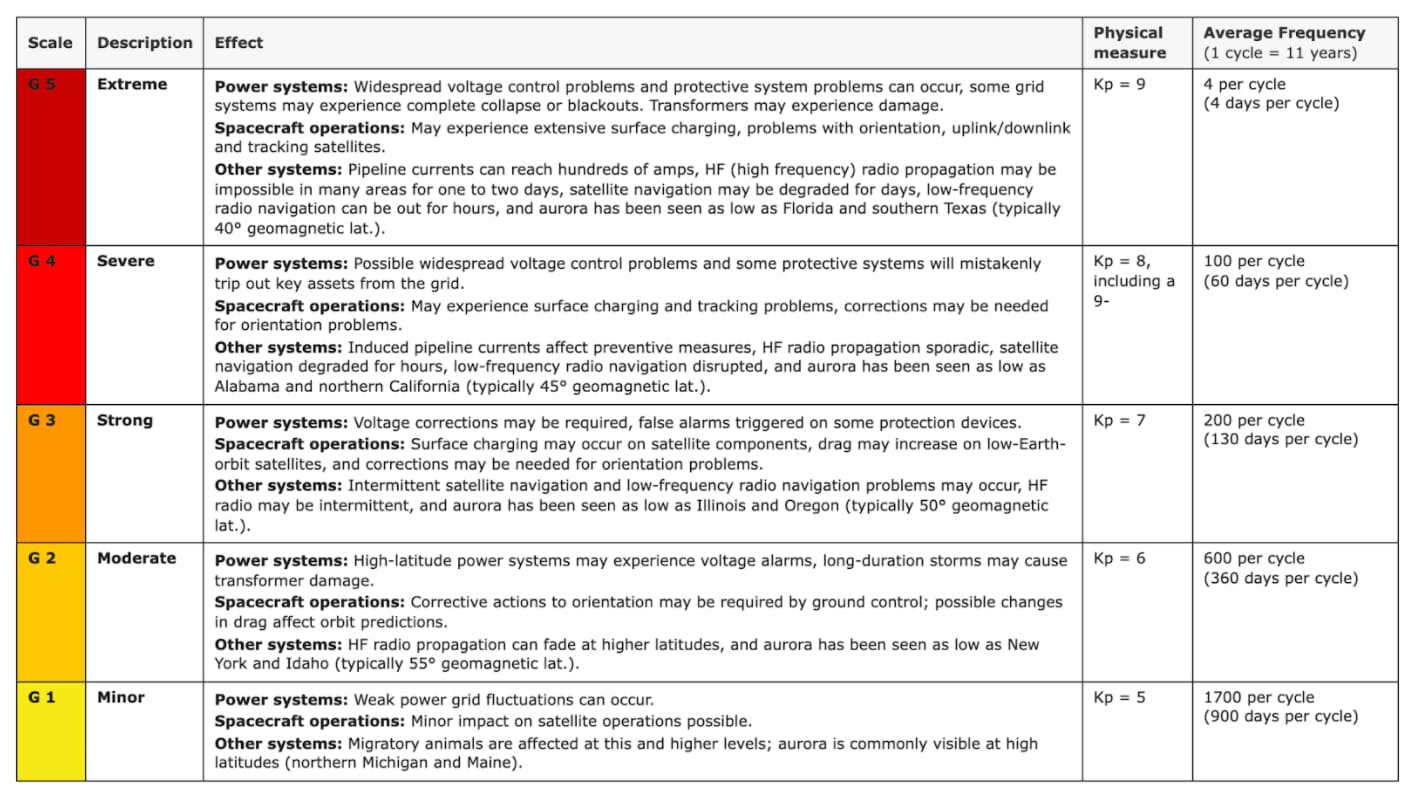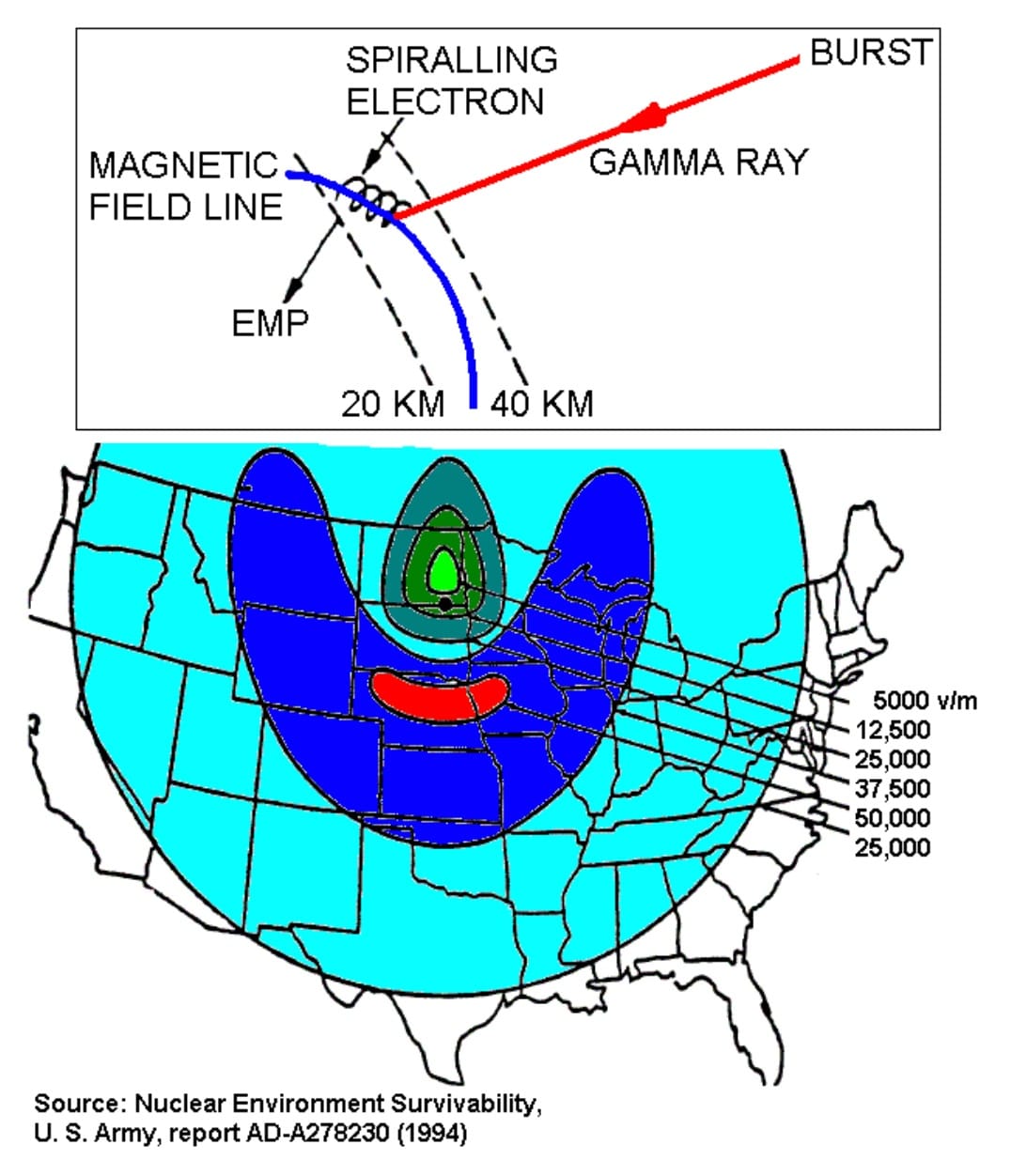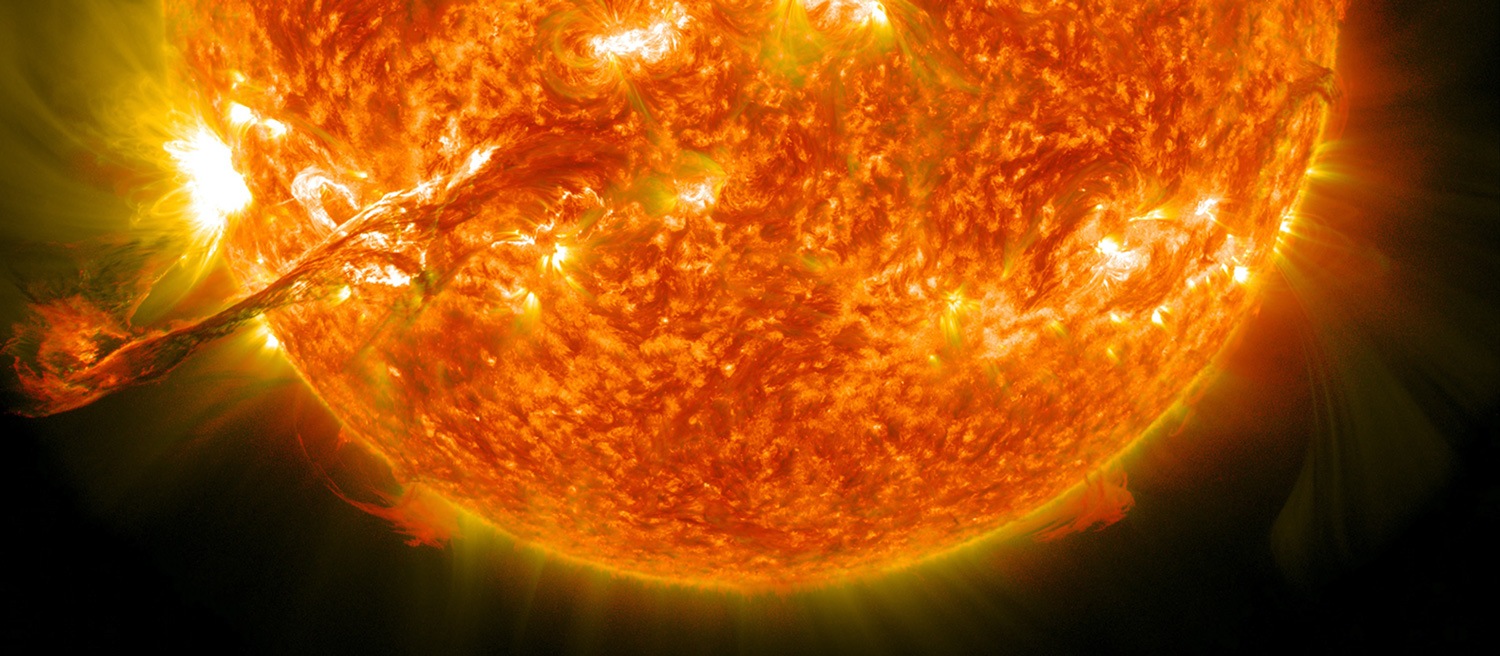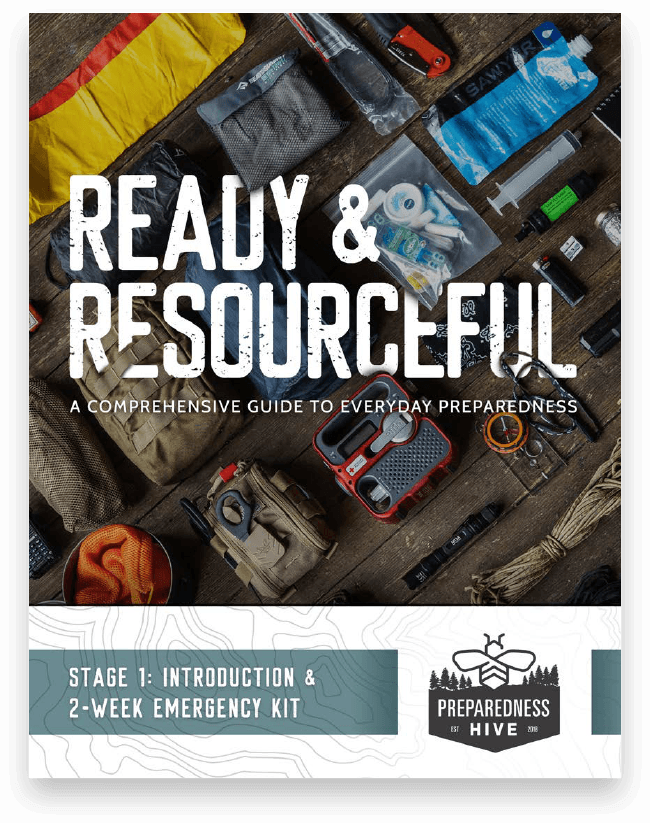If you’re reading this article, chances are that you’re aware of EMPs and CMEs and would like to know what you can do to protect yourself and your belongings from being destroyed in the wake of one of these events. Let’s break down what each of these are, along with some other common questions, misperceptions and most importantly, what types of protection mechanisms are available.
What is an Electromagnetic Pulse (EMP) and how does it differ from a Coronal Mass Ejection (CME) or a Solar Flare?
An EMP is essentially a short burst of electromagnetic energy that can be generated in a variety of ways. While there are several types of EMPs in terms of energy transference, those that raise the most concern within the preparedness community will be generated from one of the following:
- Coronal Mass Ejection (CME) – Our sun is constantly emitting large blasts of plasma and accompanying magnetic fields, sometimes with a billion tons of matter or more. Typically these just pass by us with little to no effect, or occasionally create breathtaking auroras in the northern hemisphere. If strong enough however, and especially with a direct hit on the planet, CMEs are very capable of completely penetrating our Earth’s magnetosphere and wreaking havoc on the surface. When this happens, any exposed electronics may have little chance of survival, depending on the magnitude of the storm.
CMEs usually take about two to three days to reach Earth and are being tracked very closely by NASA and other space weather organizations. Most are classified using the scale below, with G1 being the most mild and a G5 being the most extreme:
What makes these especially concerning is simply their inevitability, and the fact that we’ve really done very little to protect the vast electrical infrastructure we have in place throughout the world today. - Solar Flares – similar to CMEs, solar flares are also ejected from the sun, but these are X-rays and Gamma rays travelling at the speed of light. These take only eight seconds to reach our planet, so there’s a very small window for warning. Since these carry an equivalent potential for damage to electronics, and with their inevitability and extremely short timeframe to impact, solar flares raise even more concern from our perspective.
Solar flares are classified as A-, B-, C-, M- or X-class, with X-class being the worst. Here’s some additional info on these if you’d like to dig deeper.
Although CMEs and solar flares can occur independently, they tend to happen in tandem with one another. The most intense geomagnetic storm on record is known as the Carrington Event, which happened in September of 1859. It is assumed that the storm was likely the result of a CME, but a solar flare was also observed and recorded independently. If you’re not aware of the damaging effects this storm had, even on what little infrastructure we had in place back then, please take a moment to familiarize yourself. With nearly every modern home having multiple connected devices, and even our fundamental essentials (water distribution, food storage, etc.) being controlled electronically, it goes without saying that the effects would be infinitely more catastrophic in today’s landscape. - Nuclear Electromagnetic Pulse (NEMP) – A NEMP is a burst of electromagnetic energy created by a nuclear explosion. There are a number of factors that make up the specific destructive potential of one of these devices, the most important being the altitude of its detonation.
If detonated on the surface, the worst effects will come from radioactive particles being blasted up into the atmosphere as part of the initial explosion, which will then rain down on the surrounding areas. The EMP from this will be fairly contained to the blast radius, but could extend 100 miles or more depending on the size of the bomb.If detonated several miles above the Earth’s surface, these devices (weapons) are known as a High-altitude Electromagnetic Pulse, or HEMP. HEMPs have very little effect in terms of radiation, but the EMP damage potential is vastly greater. Below highlights an illustration of a simulated blast 250-mi above the surface for reference:

As you can see, nearly the entire United States would be impacted by just one device detonated at a high altitude. And not to add insult to injury, but there are now weapons called Super-EMPs, of which China and Russia are both confirmed to possess. These carry nearly 4 times the EMP yield as that of a standard nuclear detonation (50,000 volts per meter versus 200,000 with a super-EMP).
Wikipedia has plenty more info on these devices here, if you’d like to learn more.
How likely is an EMP event in our lifetime?
The short answer is, not all that likely. That said, events from the sun are completely out of our control and we have no definitive way of predicting exactly when the next extreme solar flare and/or CME may occur. Historically speaking, their average occurrence is about every 25 years, although they’ve rarely been directed toward Earth, fortunately. Regardless of when it happens though, there is a 100% certainty that IT WILL HAPPEN at some point.
Regarding those that are within our control, or at least those in power with the keys and launch codes, this seems to be more and more likely with every passing year. The political and sociological differences we all have seem to be driving us toward our own extinction rather than doing what it could do: help each other grow into a more diverse, culturally educated planet of humans working together to support each other. The likelihood of this type of event really just comes down to each of us individually, and our willingness to do the “right” thing. That’s different for everyone of course, but doing what feels right almost never infringes on the life, liberty or pursuit of happiness of another.
Are there ways to protect my home, vehicles and other electronic devices from an EMP?
Absolutely! The challenge with this however, is that it’s very difficult to know what the exact effects these disaster scenarios might rain down upon us. Fortunately for us though, things have come a long way in terms of advancements for EMP protection. Here are a few options and considerations to help you get prepared:
- EMP Shield – these guys have built a great series of products to help protect everything from your whole house, to your vehicles, or even backup generators. In your home, these can essentially keep any connected electronics, appliances, etc from frying out. Depending on the strength of the EMP, these may not save items exposed outside of a faraday cage or bag, but they’re a great first line of defense. They’re listed under Homeland Security as the new standard for EMP protection as well. Check out their site to learn more!

- Faraday Bags – These come in various sizes and are great for smaller electronics that you may want to protect. Things like flashlights, handheld radios and/or other radio/communication components, battery chargers, backup hard drives, electronic weapon-attachments (holographic sights, night-vision components, etc.) or anything else you might need if it were to get fried with no replacements anywhere to be found.

- Faraday Cages – If you have the time, space and resources to build an actual cage, you’ll be able to store a lot more within. These can be built from a variety of materials, but the basic principle behind these is to have a fully encompassed area with a conductive material, such as copper or aluminum mesh, which is then grounded. Here are some good resources for building your own Faraday Cage:
- Other DIY Protection – There are some other more primitive options that offer varying levels of protection as well, although we would encourage you to try and utilize one of the products above if it’s financially feasible for you.
Metal containers – Pretty much any sealed metal container (MUST be completely sealed) that is then sufficiently grounded can serve as protection against EMPs. This could be a metal trash can, a metal trunk/box, or even just a box wrapped with multiple layers of aluminum foil. It requires some kind of cloth, cardboard or other non-conductive material to line the enclosure. This effectively creates a field to allow electrons to move around the enclosure and then dissipate into the ground. Just to note here, there is no room for error with this method, so keep this in mind when you’re choosing the type of enclosure you would like to use. Be sure to tape any seams with a conductive tape like those shown below as well.
How do I know if/when an EMP happens?
If/when it happens, there’s a good chance that everything electronic will shut down immediately. The power will go out, your phone might shut off, and if strong enough, your vehicle’s engine might die and you’ll come to a rolling stop. Vehicles do have a natural grounding mechanism built in, given that they glide along on rubber tires, but this is no guarantee when it comes to a more extreme event. It’s really difficult to tell exactly how much damage would occur, so your best bet is to sign up for one or more of the notification systems available. Keep in mind, these may not help if it’s a NEMP or HEMP as there may be no warning for anyone, but for the naturally occurring events, they could give you a little warning at least. Several of these act as more comprehensive situational awareness platforms, keeping you informed of any/all potential threats around the globe as well. AVOW and AlertsUSA below are especially great at providing timely updates to current events, and well worth their cost.
Phone/Tablet Apps
- Solar Alert: Protect Your Life (iOS App)
- SpaceWeatherLive (Google App)
- Space Weather App (Google App)
Notification/Preparedness Platforms
- Another Voice of Warning (AVOW)
- AlertsUSA – Homeland Security Threat and Incident Notification
- Cyber Security & Infrastructure Security Agency (CISA)
- Flareaware
Additional EMP-related Resources and Articles
- Report of the Commission to Assess the Threat to the United States From Electromagnetic Pulse (EMP) Attack (PDF)
- Baker Statement – Joint Hearing on “The EMP Threat: The State of Preparedness against the Threat of an Electromagnetic Pulse (EMP) Event” (May 13, 2015) (PDF)
- Starfish Prime
- Soviet Project K Nuclear Tests
- The Carrington Event of 1859
What should I do if/when an EMP happens?
Much like the rest of us, your best bet is to have already prepared for such an event. If you’re reading this and feel that you need to be better prepared for such an event, start by downloading the first stage of our guide, Ready & Resourceful: A Comprehensive Guide to Everyday Preparedness. It’ll walk you through what it means to be prepared, and take the overwhelm and guesswork out, helping streamline both your budget and your efforts. There’s no one-size-fits-all solution to getting prepared, but we’ve done our best to help you identify what is truly needed for your specific situation.
I said it before and I’ll say it again, it’s not a matter of if but when one of these events will occur. Please do whatever it takes to make preparations now and give yourself and loved ones some peace of mind.







